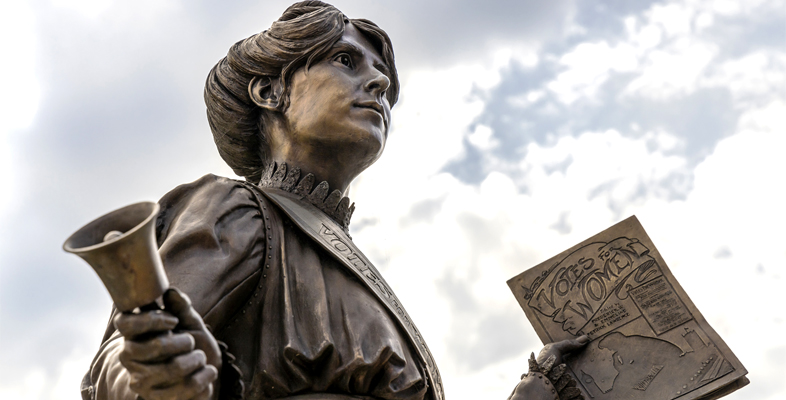4.1 The Women’s Coronation Procession
The Women’s Coronation Procession took place on Saturday 17 June 1911 in London. This was a time of renewed hope for the women’s suffrage movement. There seemed to be a genuine prospect of a bill being put before Parliament, and the WSPU had called a truce on its militant actions to give the parliamentary process a chance to work. It was decided that the time was right for a grand demonstration in London that would bring together the various wings of the women’s suffrage movement.
The choice of time and place was no accident – a summer’s evening in central London, just a few days before the coronation procession of King George V, a time when visitors from across the world would be present in the capital.
You’re going to find out more about the Women’s Coronation Procession now by using two types of primary sources.
The first is a newspaper report. The procession in question, which, as mentioned above, occurred on Saturday 17 June 1911, was widely reported in the national newspapers on Monday 19 June.
Activity 4 Using a newspaper report to find information
Read the following article.
The Times, ‘The Women’s Suffrage Demonstration’ [Tip: hold Ctrl and click a link to open it in a new tab. (Hide tip)]
As you read, make notes, either in the text boxes below or in your learning notebook, on the following questions:
What use was made in the procession of the history of women’s endeavours?
Discussion
The historical message of the procession was that there had been many women of distinction over the centuries; for example, Abbess Hilda, Joan of Arc, Elizabeth I and Florence Nightingale. Women had achieved great things in the past, and (through the professions represented in the procession) were still achieving great things in the present. How could the vote be denied to people such as these?
In what ways did the procession convey the breadth of support for women’s suffrage?
Discussion
The procession emphasised the range of support for women’s suffrage in a variety of ways. There was support from the different national regions in the UK, the British Empire and the rest of the world. There was also support from people of different classes, employments, political alignments and religious denominations.
What was the balance in the procession between peaceful and militant supporters of votes for women?
Discussion
The article is keen to stress that the militant WSPU was not the only or even the main group in the procession – there was a larger contingent of moderate ‘constitutionalists’ who were associated with the NUWSS under the leadership of Mrs Henry Fawcett.
What do the organisation and scale of this procession indicate about the women’s suffrage movement at this time?
Discussion
The procession shows us clearly that the campaign for women’s suffrage was not just a matter of a few militant individuals – it was a large, popular movement of many thousands of people, with highly efficient structures of organisation that were capable of mounting an impressive demonstration in the capital.
Did your responses cover some of the same issues as those mentioned in the comments above? Don’t worry if yours don’t look exactly the same. As is the case throughout this course the main thing is that your notes and responses help you to engage with and remember the materials.
